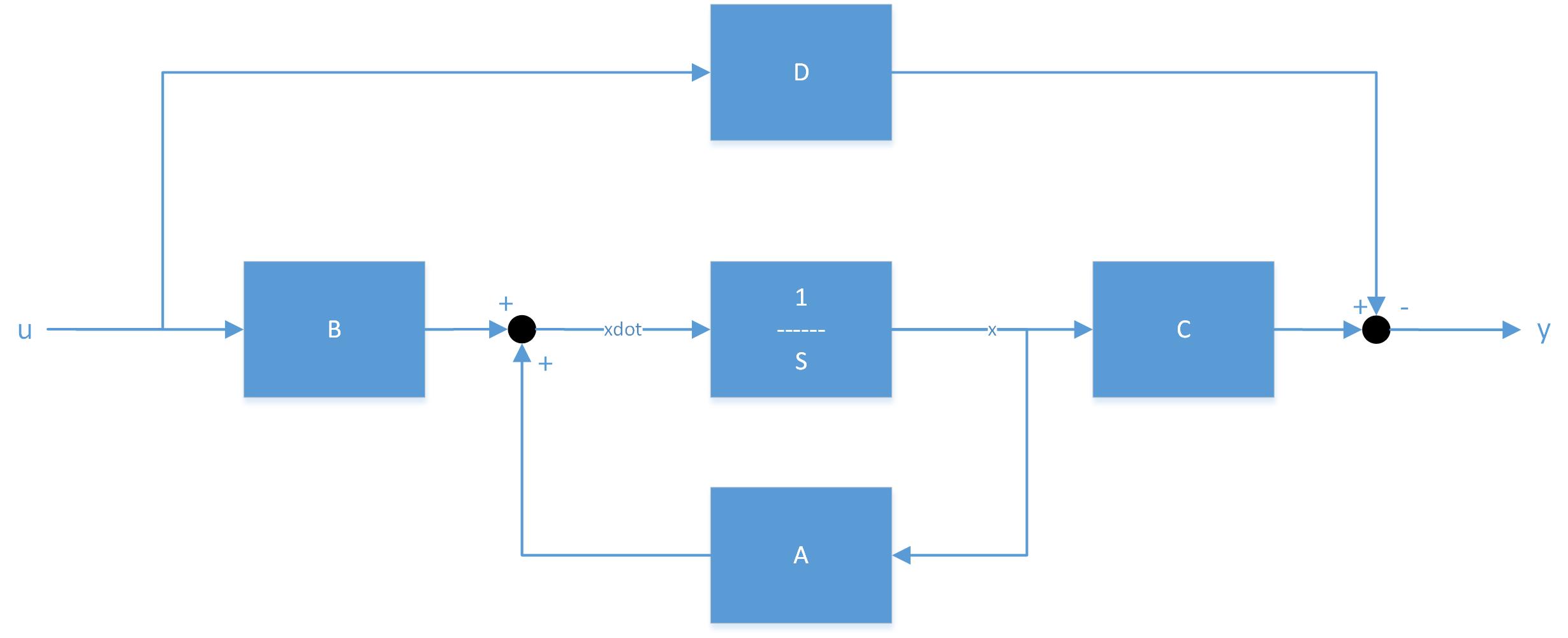Full state feedback on:
[Wikipedia]
[Google]
[Amazon]
Full state feedback (FSF), or pole placement, is a method employed in feedback control system theory to place the closed-loop poles of a
 If the closed-loop dynamics can be represented by the state space equation (see
If the closed-loop dynamics can be represented by the state space equation (see  :.
Substituting into the state space equations above, we have
:
:
The poles of the FSF system are given by the characteristic equation of the matrix , . Comparing the terms of this equation with those of the desired characteristic equation yields the values of the feedback matrix which force the closed-loop eigenvalues to the pole locations specified by the desired characteristic equation.
:.
Substituting into the state space equations above, we have
:
:
The poles of the FSF system are given by the characteristic equation of the matrix , . Comparing the terms of this equation with those of the desired characteristic equation yields the values of the feedback matrix which force the closed-loop eigenvalues to the pole locations specified by the desired characteristic equation.Control Design Using Pole Placement
/ref>
Mathematica function to compute the state feedback gains
Control theory Feedback
plant
Plants are predominantly photosynthetic eukaryotes of the kingdom Plantae. Historically, the plant kingdom encompassed all living things that were not animals, and included algae and fungi; however, all current definitions of Plantae exclu ...
in pre-determined locations in the s-plane
In mathematics, the Laplace transform, named after its discoverer Pierre-Simon Laplace (), is an integral transform that converts a function of a real variable (usually t, in the ''time domain'') to a function of a complex variable s (in the com ...
.* Placing poles is desirable because the location of the poles corresponds directly to the eigenvalue
In linear algebra, an eigenvector () or characteristic vector of a linear transformation is a nonzero vector that changes at most by a scalar factor when that linear transformation is applied to it. The corresponding eigenvalue, often denoted ...
s of the system, which control the characteristics of the response of the system. The system must be considered controllable in order to implement this method.
Principle
 If the closed-loop dynamics can be represented by the state space equation (see
If the closed-loop dynamics can be represented by the state space equation (see State space (controls)
In control engineering, a state-space representation is a mathematical model of a physical system as a set of input, output and state variables related by first-order differential equations or difference equations. State variables are variables wh ...
)
:
with output equation
:
then the poles of the system transfer function are the roots of the characteristic equation given by
:
Full state feedback is utilized by commanding the input vector . Consider an input proportional (in the matrix sense) to the state vector,
 :.
Substituting into the state space equations above, we have
:
:
The poles of the FSF system are given by the characteristic equation of the matrix , . Comparing the terms of this equation with those of the desired characteristic equation yields the values of the feedback matrix which force the closed-loop eigenvalues to the pole locations specified by the desired characteristic equation.
:.
Substituting into the state space equations above, we have
:
:
The poles of the FSF system are given by the characteristic equation of the matrix , . Comparing the terms of this equation with those of the desired characteristic equation yields the values of the feedback matrix which force the closed-loop eigenvalues to the pole locations specified by the desired characteristic equation./ref>
Example of FSF
Consider a system given by the following state space equations: : The uncontrolled system has open-loop poles at and . These poles are the eigenvalues of the matrix and they are the roots of . Suppose, for considerations of the response, we wish the controlled system eigenvalues to be located at and , which are not the poles we currently have. The desired characteristic equation is then , from . Following the procedure given above, the FSF controlled system characteristic equation is : where : Upon setting this characteristic equation equal to the desired characteristic equation, we find :. Therefore, setting forces the closed-loop poles to the desired locations, affecting the response as desired. This only works for Single-Input systems. Multiple input systems will have a matrix that is not unique. Choosing, therefore, the best values is not trivial. A linear-quadratic regulator might be used for such applications.See also
*Pole splitting Pole splitting is a phenomenon exploited in some forms of frequency compensation used in an electronic amplifier. When a capacitor is introduced between the input and output sides of the amplifier with the intention of moving the pole lowest in fre ...
*Step response
The step response of a system in a given initial state consists of the time evolution of its outputs when its control inputs are Heaviside step functions. In electronic engineering and control theory, step response is the time behaviour of the out ...
* Ackermann's Formula
* Linear-quadratic regulator
References
{{reflistExternal links
Mathematica function to compute the state feedback gains
Control theory Feedback